ing such disasters. If you plan to work in a paint shop, you should take heed of this advice.
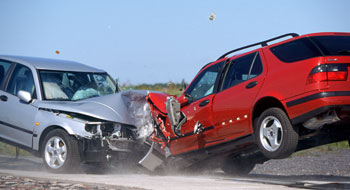 Attack of the ‘Hack Butchers’
Attack of the ‘Hack Butchers’
I began an easy enough bumper job to start my week. The bumper was a little scratched up, and the customer wanted it fixed and painted. So while I was mixing up some paint and doing a test panel, one of our shop’s body techs was doing the repair. By the time I was done checking the color on the car, the tech delivered the repaired bumper to me. He had opted to DA (dual-action sander) the life out of the bumper with what appeared to be 40 grit (as with all body techs, however, he claimed a 180 grit finish).
Granted, the fine scratches on the Audi S5 bumper were indeed gone. But now I had to perform miracles with sandpaper, adhesion promoter, primer, more sandpaper and again more primer. As I worked with the repaired/destroyed bumper, I kept asking myself over and over again, “Why?”
“Why?” is a question I’ve often found myself asking since I’ve been doing this type of work. Why doesn’t anyone care? Why is there a refusal to follow even a modicum of proper procedure? Why doesn’t anybody take any pride in their work? Why are there so many hack butchers out there?
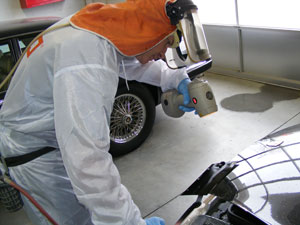
Nightmares on Elm Street
I see them on the road every single day every quarter mile or so: peeling bumpers, wavy panels, mottling, mismatched paint, popped body filler, bull’s eyes, swelling, sand scratches, swirl marks – all evidence of incompetent body techs and painters. Why? Whenever I want a laugh, I go to a car show and stare in awe at the paint and bodywork that’s being considered “show quality.” It’s downright shocking. The sheer volume of this type of workmanship I see tells me that there are plenty of you readers out there who have seen it, too.
I’ve been around the block and seen plenty of hack workmanship going down right in front of my face. I’ve seen guys painting over dirty, poorly sanded panels. I’ve seen countless “sledgehammer adjustments” in the final assembly stage. And, of course I’ve been handed thousands of body repairs finished with such a course grit it’s not worth the primer I have to put on them.
Clearly, these nightmares are a major problem in our industry. I would imagine it’s a big reason why many collision repair shops have a bad name. I’m guessing there are more than a couple of you out there who are knowingly or unknowingly putting this type of work out there on the street.
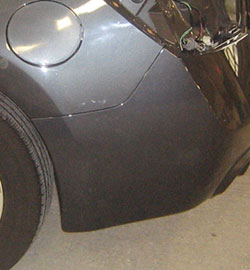
For those of you who are knowingly doing this, I would tell you to start taking pride in your work, but obviously you don’t care. I would tell you to do the repairs properly, but as usual, you would just blame the insurance industry. I think you’re a lost cause. I have no patience for what you do, and I don’t have any respect for you. If you can find any reasons to take your profession seriously, just stop doing it. Close down your shops. We don’t need you.
It’s a whole different story if your shop has the desire to improve its quality. Maybe you’re baffled by some of the poor results you’ve produced and you’re not sure how to fix them or avoid them in the future. Most of the bad repairs I see rolling down the road can be avoided very simply. How about you start to improve your repairs right now by tackling some of the main problems I see passing by me on the road today?
Peeling Problems
This is a pretty easy nut to crack, but a common problem. You need to find a way to actually make the paint stick to the car.
I usually see paint flaking off of replacement bumpers in big chunks. This is from not following your paint manufacturer’s procedures correctly. I don’t paint bumpers that peel because I’ve read the instructions on how to paint them and I follow those instructions. I’ve used several types of paints in my career, and the plastic painting procedures were a little different for each one. And, I chose to follow those directions rather than thinking my way was better.
So next time you get a comeback for a peeling bumper, don’t curse your paint rep out. Ask yourself what procedure your shop was ignoring in the prep process. Do what your paint system tells you to and peeling replacement bumpers won’t be a problem any longer.
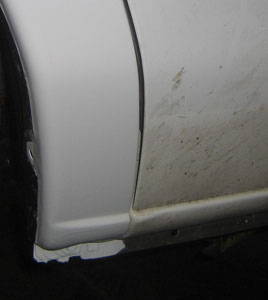
Bumpers aside, I also see a lot of cars with paint peeling around door handles, moldings and windows. To fix this, a little more effort is needed. The trim needs to be removed from the car. Take the door handles out, remove the belt moldings and body side moldings, remove the headlights, loosen the bumpers. The finish on a car needs to be clean and abraded to ensure good adhesion. You can only clean and abrade so well with all the parts still on the car.
It’s also important to make sure the person who is prepping the cars for paint isn’t lazy. Paint peeling at the edges of panels is caused 100 percent by laziness. There are a lot of products on the market to make sanding and scuffing cars pretty easy. Use them to clean the panels really well and you’ll be able to cross peeling paint off your list of comebacks.
Beware of the Sand Scratches
Scratches from the bodywork showing through in the top coat is a pet peeve of mine. I see this a lot at car shows. The car will look fine when it leaves your shop, but a month or two down the road there’s a blueprint of the body repair all over the fresh paint. Once again, this is caused by both laziness and not following the paint system procedures.
Read the instructions your paint of choice gives you for what its primer will fill. It will usually tell you the primer will fill 180 grit scratches in body filler. For the record, 180 grit is 180 grit. It’s not 40 or 80 grit with the tops knocked off with 180. I’ve always found this a pretty simple concept, but apparently almost nobody understands it.
This poor sanding grit usage is made worse by the impatient painter who abuses primer surfacer. Once again, follow the recommendations of your paint company. Flash times are given for a reason.
Keeping sand scratches hidden forever is one of the differences between a run-of-the-mill body shop and a top-notch collision repair facility.
Mysterious Mismatched Parts
I see mismatched panels on a lot of cars during my daily commute. Bumpers are very common because the adjacent panels are usually not blended. Making a test panel before painting is one of the most important things a shop can do. If the test panel doesn’t match, neither will the bumper. The test panel will tell you if you need to choose another variant of the same color. It will tell you if you need to adjust the color slightly. And it will tell you if you do in fact need to blend the adjacent panels.
When I first started painting, I used to be embarrassed if I couldn’t match a bumper perfectly. I would spend a long time trying to tint the cursed piece of plastic so it would match. After all, what painter doesn’t get scoffed at when they tell the boss they want to blend the fenders? Whenever I tint a color, I’m not trying to butt match a panel anymore. I don’t care if it’s a bumper or a hood or a door. I tint for a blendable match.
I’m not ashamed at all to ask to blend adjacent panels for a bumper. I do it all the time, and if the bumper is going to otherwise stand out like a sore thumb, so should you.
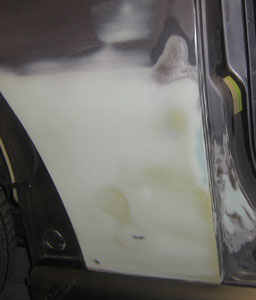
I also see plenty of silver and gold Hondas rolling around with one or more panels that don’t match the rest of the side of the car. Again, blending is the key here. Most shops take for granted that if a new door gets put on a car, the adjacent panels will be blended into it. But far too often, they hope for the best when there’s a repair on a panel and pray that they keep the color away from the next panel. It doesn’t take much stray basecoat to completely change the tone of a panel.
As a painter, I know when the best move is to blend additional panels. If I think there might possibly be a problem, I ask for extra panels. If there’s a ding in the middle of a silver door, I’m blending into the back door and the fender. Could I use all my skill and finesse to keep it within the door, producing an undetectable repair? Maybe. But maybe also means maybe not. I’m not interested in taking risks on someone else’s car.
And, I’m certainly not interested in doing the repair over. If there’s any doubt about the outcome of a color match, I take another panel, and you should do this, too. Don’t rely on your unbelievable ability to sell a job to the customer. Instead, rely on your topnotch work.
Make Your Work Undetectable
The path to becoming a high-quality repair facility is one well worth taking. It’s really all about the product you put out. Whether you’re doing a complete paint job, a massive front end hit or simply replacing a bumper, a quality finished job is the goal we should all be reaching for.
One thing I do is make myself very familiar with my paint system’s handbook, and I don’t deviate from it. And, I also plan each job in my head and figure out how to do it right the first time. Take into account the ways a job could go wrong and need to be redone, and then take the appropriate steps to avoid these potential problems. If you’re not doing what’s necessary the first time to create that undetectable repair, then you’ve got some work ahead of you. It’s a battle, but the battle is worth it.
About the Author:
Writer Nathan Tarr has been working in and around the collision repair industry for the last 12 years and admits to being “thoroughly addicted to auto body work. It’s my hobby as well as my job.” Sikkens certified and PPG certified, Tarr has been working as a painter for the past five years. Tarr is also a member of the Coalition for Collision Repair Excellence (CCRE).


